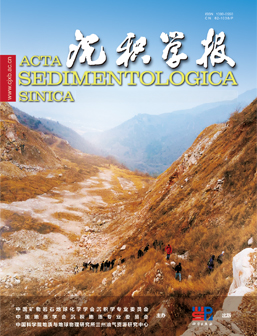Differential Genesis and Paleoenvironmental Significance of Early Triassic Ooids and Giant Ooids——Take the Yuanba area in northern Sichuan as an example
doi: 10.14027/j.issn.1000-0550.2023.083
- Received Date: 2023-04-12
- Available Online: 2023-10-08
-
Key words:
- Oolites and giant oolites /
- Genetic mechanism /
- Paleomarine environment /
- Early Triassic /
- Yuanba District
Abstract: The Early Triassic is a special geological historical period after the mass extinction of organisms. The genetic mechanism of oolites and giant oolites and the paleomarine environment they represent have been a controversial issue in the field of geology. Based on field and core observations, using petrological, mineralogical, and geochemical analyses, this paper explores the sedimentary characteristics, genesis, and paleoenvironmental significance of oolites and giant oolites from the Early Triassic Feixianguan Formation in the Yuanba area. The research shows that the oolites and giant oolites of the Feixianguan Formation in the Yuanba area are mainly developed in the platform margin zone of the Fei'er Member, and the types of oolites are mainly concentric oolites and single crystal oolites, indicating that they were formed in a shallow water environment with strong hydrodynamic forces and easy exposure; The type of giant oolites is dominated by concentric oolites, which are often thinly interbedded with oolitic limestone and micrite limestone, accompanied by the appearance of scouring surfaces, indicating that they are developed in areas affected by indirect storm action. Combined with geochemical analysis, it is found that the Sr content of the oolitic concentric ring layer is high, and the common needle or rod shaped crystal structure indicates that its original minerals are mainly aragonite deposits; However, the Sr content of the giant oolitic concentric layer is relatively low, and the irregular granular crystal structure is mainly developed, indicating that its original minerals are mainly calcite deposits. In addition, the oolitic concentric sphere has characteristics such as high Fe content, no significant Ce anomalies, positive Eu anomalies, LREE relative HREE enrichment, and V/(V+Ni)>0.6, indicating that it was formed in a ferritized weak oxygen reduction environment; Giant oolites have characteristics such as low Fe content, negative Ce anomalies, LREE relative HREE depletion, and V/(V+Ni)<0.6, indicating that they were formed in an oxidation-weak oxidation environment. According to comprehensive analysis, during the sedimentary period of the Early Triassic Feixianguan Formation, the seawater was mainly composed of anoxic aragonite sea, which was influenced by the strengthening of continental weathering, especially intermittent storms, which increased the input of terrestrial materials (especially Ca2+and oxidants), resulting in the decrease and oxidation of Mg/Ca in the shallow seawater, and the development of a transient calcite sea. This may be one of the important reasons for the improvement of the marine environment and the gradual recovery of organisms in the Early Triassic.
| Citation: | Differential Genesis and Paleoenvironmental Significance of Early Triassic Ooids and Giant Ooids——Take the Yuanba area in northern Sichuan as an example[J]. Acta Sedimentologica Sinica. doi: 10.14027/j.issn.1000-0550.2023.083 |






 DownLoad:
DownLoad: